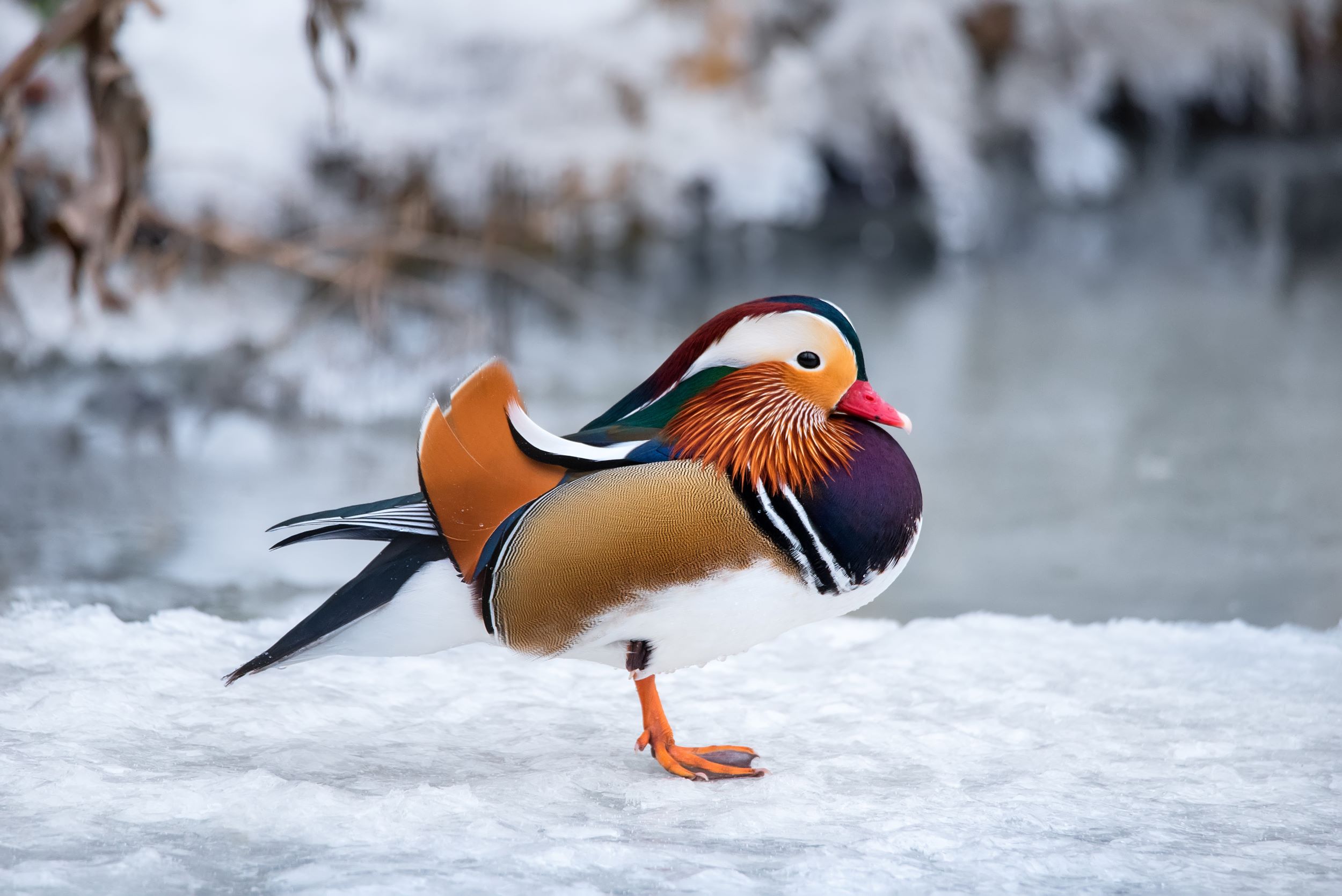
Mandarin Ducks in Utah
Mandarin Ducks in Utah, though not native to the region, represent an intriguing and visually captivating aspect of the state's bird population. Originally hailing from East Asia, these ducks are known for their exceptionally vibrant plumage and unique behaviors. In Utah, the presence of Mandarin Ducks is typically the result of escape or release from captivity, as they are popular in aviculture. These ducks are occasionally sighted in the state's wetlands, parks, and nature reserves, where they inhabit similar environments to their North American counterparts, such as the Wood Duck.
The male Mandarin Duck is particularly renowned for its striking appearance during the breeding season. It exhibits a kaleidoscope of colors and elaborate ornamental feathers, with bold orange plumes fanning out from the back, a red bill, and distinctive white eye-stripes set against a dark face. The female, by contrast, is more subdued, with mottled brown and white plumage, yet still elegant. Their distinctive looks make Mandarin Ducks a favorite among birdwatchers and nature photographers in Utah, who are keen to catch a glimpse of these rare and exotic visitors.
In terms of behavior, Mandarin Ducks in Utah exhibit similar traits to their native counterparts. They are perching ducks, able to roost in trees due to their specially adapted claws. This arboreal habit is unique among ducks and is a fascinating aspect of their natural history. They are also known for their strong pair bonds, often forming close relationships during the breeding season. Males are particularly attentive and can be seen engaging in various courtship displays, including ritualistic preening, mock-drinking, and shaking.
The diet of Mandarin Ducks in Utah reflects their adaptability and opportunistic feeding habits. Unlike many duck species that dabble at the water's surface, Mandarin Ducks are more versatile in their foraging techniques. They feed on a diet that includes seeds, nuts, acorns, grains, and a variety of plants. Additionally, they consume insects, small fish, and amphibians, which they often catch by skimming or picking off the water's surface or foraging along the water's edge. This diverse diet allows them to adapt to different environments, including the varied habitats found in Utah. Their feeding behavior is a testament to their ability to survive outside their native range, utilizing the resources available in their adopted environments effectively.
The presence of Mandarin Ducks in Utah, while enchanting, also brings attention to the broader issues of exotic species introduction and habitat conservation. While they are not considered invasive and have not established significant wild populations in the state, their presence highlights the complexities of wildlife management and the potential impacts of non-native species on local ecosystems. Conservation efforts aimed at protecting native waterfowl and their habitats are essential. Ensuring healthy wetlands and wooded areas not only supports the native species but also provides suitable environments for occasional exotic visitors like the Mandarin Duck. Their presence in Utah is a reminder of the importance of ecological stewardship and the need for balanced, informed approaches to wildlife conservation and habitat management.